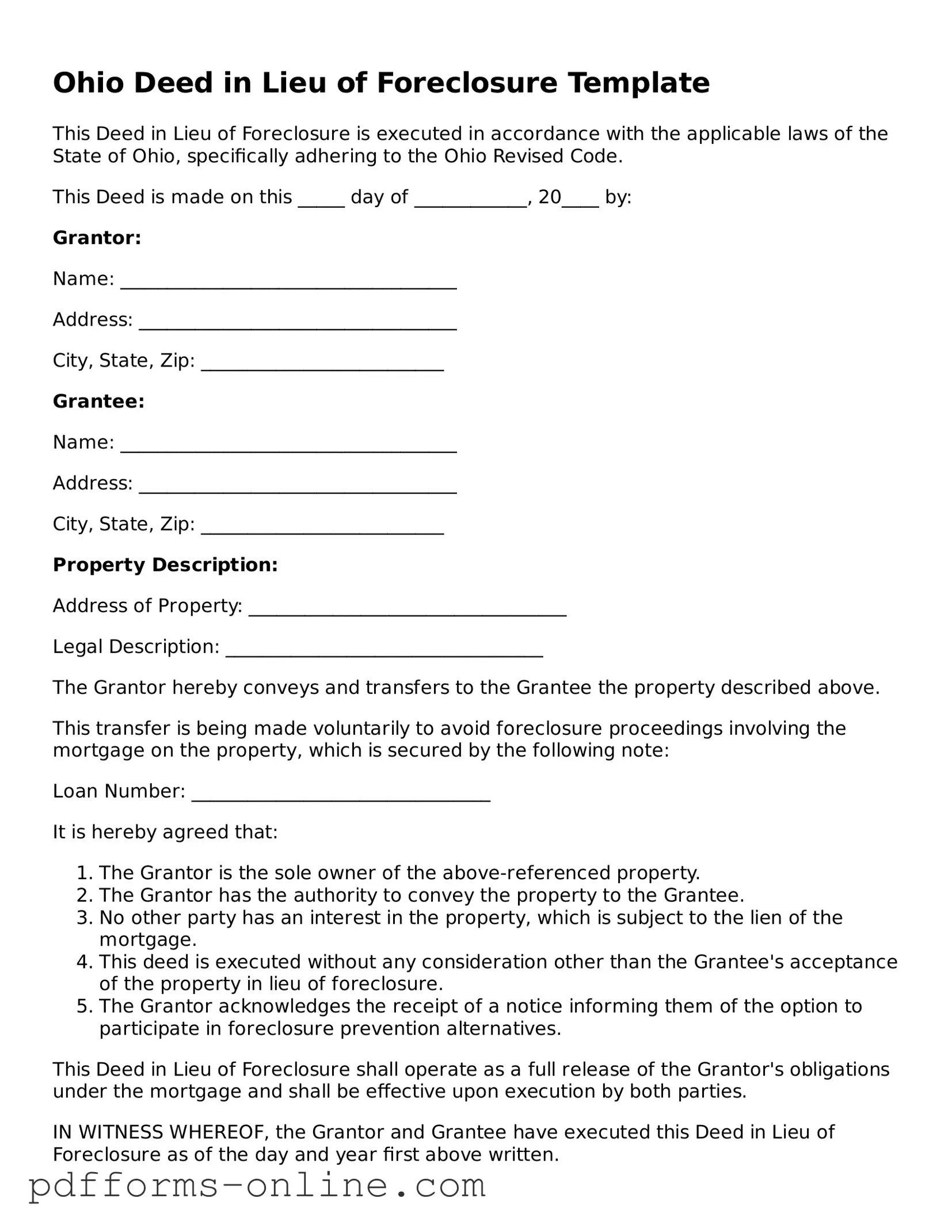Ohio Deed in Lieu of Foreclosure Template
This Deed in Lieu of Foreclosure is executed in accordance with the applicable laws of the State of Ohio, specifically adhering to the Ohio Revised Code.
This Deed is made on this _____ day of ____________, 20____ by:
Grantor:
Name: ____________________________________
Address: __________________________________
City, State, Zip: __________________________
Grantee:
Name: ____________________________________
Address: __________________________________
City, State, Zip: __________________________
Property Description:
Address of Property: __________________________________
Legal Description: __________________________________
The Grantor hereby conveys and transfers to the Grantee the property described above.
This transfer is being made voluntarily to avoid foreclosure proceedings involving the mortgage on the property, which is secured by the following note:
Loan Number: ________________________________
It is hereby agreed that:
- The Grantor is the sole owner of the above-referenced property.
- The Grantor has the authority to convey the property to the Grantee.
- No other party has an interest in the property, which is subject to the lien of the mortgage.
- This deed is executed without any consideration other than the Grantee's acceptance of the property in lieu of foreclosure.
- The Grantor acknowledges the receipt of a notice informing them of the option to participate in foreclosure prevention alternatives.
This Deed in Lieu of Foreclosure shall operate as a full release of the Grantor's obligations under the mortgage and shall be effective upon execution by both parties.
IN WITNESS WHEREOF, the Grantor and Grantee have executed this Deed in Lieu of Foreclosure as of the day and year first above written.
______________________________
Grantor's Signature
Date: _______________________
______________________________
Grantee's Signature
Date: _______________________
Notary Public: _______________________
My Commission Expires: _______________
